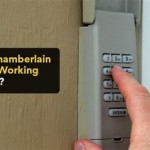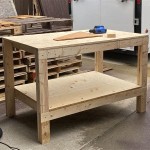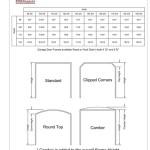How To Smooth A Rough Concrete Garage Floor
A rough concrete garage floor can be unsightly, create tripping hazards, and make cleaning difficult. Smoothing the floor can improve its appearance, functionality, and longevity. Several methods exist for smoothing concrete, each with its pros and cons, making it crucial to choose the right method based on the severity of the roughness and the desired outcome.
Grinding
Grinding is the most aggressive smoothing method and is best suited for significantly uneven surfaces or floors with major imperfections. This process utilizes a specialized grinding machine equipped with diamond-impregnated abrasive discs. These discs remove the top layer of concrete, leveling high spots and smoothing out rough patches. Grinding generates a significant amount of dust, so proper ventilation and dust collection systems are essential. After grinding, the floor typically requires a sealant to protect it from staining and wear.
Different levels of grinding exist, from light grinding to remove minor imperfections to heavy grinding for significant leveling. The choice depends on the specific condition of the garage floor. Professional contractors typically perform grinding due to the specialized equipment and expertise required. However, smaller, hand-held grinders are available for DIY enthusiasts tackling minor smoothing projects. Regardless of the scale, proper safety precautions, including eye protection and respirators, are crucial.
Self-Leveling Concrete
Self-leveling concrete, also known as self-leveling underlayment, is a cementitious compound designed to flow across a concrete surface and create a smooth, even finish. It's ideal for filling minor imperfections and creating a level base for flooring installations like epoxy coatings or tiles. Self-leveling concrete is not suitable for large cracks or significantly uneven surfaces, where grinding might be a more appropriate solution.
Before applying self-leveling concrete, the existing floor must be thoroughly cleaned and primed to ensure proper adhesion. The compound is then mixed with water according to the manufacturer's instructions and poured onto the floor. It naturally levels itself, filling in low spots and creating a smooth surface. Once dry, the self-leveling concrete provides a suitable base for various flooring finishes.
Concrete Resurfacer
Concrete resurfacer is a cementitious overlay designed to repair and resurface existing concrete surfaces. It fills minor cracks, chips, and imperfections, creating a smoother and more aesthetically pleasing finish. Resurfacers are available in different thicknesses and formulations to accommodate varying levels of surface damage and desired textures. They are a less aggressive option than grinding and are suitable for floors with minor to moderate imperfections.
Applying concrete resurfacer requires proper surface preparation, including cleaning and patching any significant cracks or holes. The resurfacer is then mixed with water and applied to the floor using a trowel or squeegee. It can be textured or stamped to create decorative finishes. Once cured, the resurfacer provides a durable, wear-resistant surface that can withstand regular garage traffic.
Epoxy Coatings
While not a smoothing method in itself, epoxy coatings can be used to create a smooth and seamless surface over a relatively level concrete floor. Epoxy coatings are durable, resistant to stains and chemicals, and are available in a variety of colors and finishes. They are not suitable for floors with significant cracks or unevenness, as the epoxy will simply follow the contours of the existing surface. Prior to epoxy application, any necessary repairs and leveling should be completed using methods like grinding or self-leveling concrete.
Applying an epoxy coating requires a clean, dry, and properly prepared concrete surface. The epoxy is mixed according to the manufacturer's instructions and applied to the floor using a roller or squeegee. Multiple coats may be required to achieve the desired thickness and finish. Epoxy coatings can create a visually appealing and highly functional garage floor surface while offering excellent protection against wear and tear.
Choosing the Right Method
Selecting the appropriate method for smoothing a rough concrete garage floor depends on several factors. The extent of the roughness, the desired final finish, and the budget all play a role in the decision-making process. For severely uneven surfaces, grinding is often the best solution. For minor imperfections, self-leveling concrete or concrete resurfacers are viable options. Epoxy coatings provide a durable and aesthetically pleasing finish over relatively level surfaces. Consulting with a concrete professional can provide valuable insights and guidance in choosing the most effective and appropriate method for specific project requirements.

Smoothing Rough Concrete

How To Fix A Concrete Garage Floor Diy Family Handyman

Applying On Rough Concrete 3 Useful Tips

How To Smooth Concrete After It Dries 7 Ways Rough

How To Easily Resurface A Concrete Floor Watco

Easily Repair Your Pitted Or Spalled Garage Floor All Floors

Easily Repair Your Pitted Or Spalled Garage Floor All Floors

How To Smooth Concrete After It Dries 7 Ways Rough

Self Leveling Concrete Preparing For Installation Tips

How To Sand Concrete 11 Steps For A Smooth Finish
Related Posts








